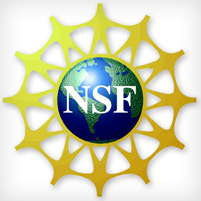CMU Takes Learning Science To Next Level

A critical component of the success of The Simon Initiative, Carnegie Mellon University's pioneering development of the field of learning science, is persuading private companies and other education institutions to share learning data.
With $5 million in new National Science Foundation funding and partners that include MIT and Stanford, CMU is leading an effort called LearnSphere to accelerate developing and disseminating learning techniques and technologies.
When the Pittsburgh Science of Learning Center (PSLC) debuted Oct. 1, 2004, it was the first time that education underwent rigorous experimentation in real classroom settings while applying the tools of data mining and machine learning on a large scale to develop cognitive models of human learning, said Ken Koedinger, a professor of psychology and human-computer interaction.
Over the past 10 years, and with $50 million in NSF support, the PSLC has conducted over 580 studies. Students who performed their graduate research within the PSLC have helped introduced evidence-based courseware and curriculum development at major education publishers such as Kaplan and Pearson or have created independent ed-tech startups.
Koedinger said the PSLC's greatest legacy is the creation of DataShop, which has become the world's largest open repository of learning data, housing hundreds of thousands of hours of student interaction with tutoring software, educational games and other online courseware.This data can be analyzed by researchers to continuously improve software learning systems and learning assessment tools.
The goal of LearnSphere is to increase the amount of data shared by creating a distributed, rather than centralized system. Researchers will store their data on their own servers, enabling them to maintain the confidentiality of their subjects and exercise greater control over what elements of that data can be accessed by outsiders.
"We're trying to create a culture in which scientists will not only be cited for their research findings, but also for their datasets," Koedinger said.
LearnSphere also will allow data scientists to contribute new machine learning and statistical tools that researchers, course developers and instructors will be able to graphically combine to meet their scientific or practical needs.
Another new feature of LearnSphere is incorporating data from Massive Open Online Courses, or MOOCs. Stanford and MIT are associated with Coursera and edX respectively, the two largest MOOC providers, and will be providing selected MOOC data to LearnSphere. While MOOCs have garnered much publicity, they have been plagued by high drop-out rates and have tended to benefit students who are already highly educated and self-motivated.
Carolyn Rose of the Language Technologies Institute and Human-Computer Interaction Institute, along with colleagues at the University of Memphis, is focusing on reducing attrition by identifying warning signs that students are in danger of dropping out. The team will explore new methods, including peer assistance, to re-engage such at-risk students in the courses.
Jessica Hammer, assistant professor in human-computer interaction and the Entertainment Technology Center, will examine how to adjust course design to account for cultural differences in learning and how and when to incorporate educational games into MOOCs.
"Learning models based on the wide variety of datasets housed in LearnSphere will enable new forms of personalized, just-in-time support for learning," Rose said.
Related Links: Press Release: Carnegie Mellon Leads New NSF Project | The Simon Initiative | Pittsburgh Science of Learning Center | National Science Foundation
